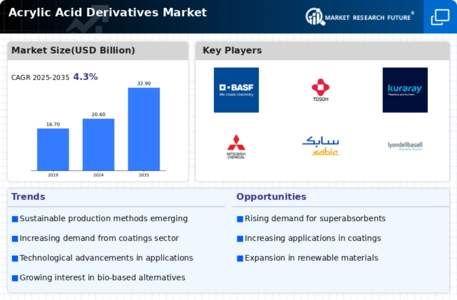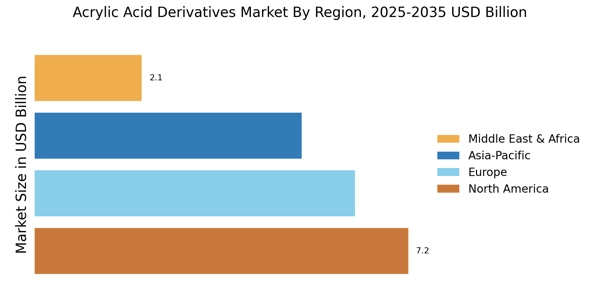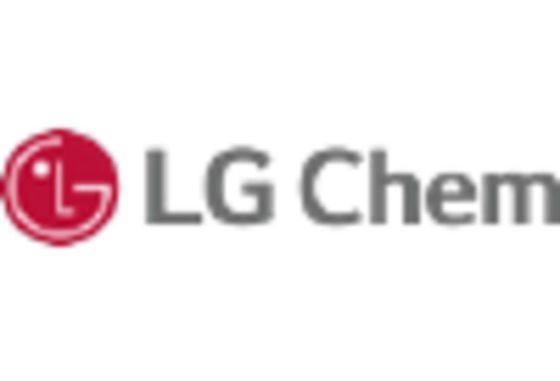Expansion in Coatings and Paints
The Acrylic Acid Derivatives Market is significantly influenced by the expansion of the coatings and paints sector. Acrylic derivatives are widely utilized in formulating water-based paints and coatings, which are gaining popularity due to their low environmental impact and excellent performance characteristics. The coatings market is anticipated to grow at a CAGR of around 4% in the coming years, driven by increasing construction activities and a shift towards eco-friendly products. This trend suggests that acrylic acid derivatives will play a crucial role in meeting the evolving demands of the coatings industry, particularly as manufacturers focus on developing high-quality, sustainable solutions that comply with stringent regulations.
Growth in Superabsorbent Polymers
The Acrylic Acid Derivatives Market is witnessing substantial growth in the production of superabsorbent polymers (SAPs), which are primarily used in personal care products such as diapers and feminine hygiene items. The demand for SAPs is projected to increase significantly, with estimates suggesting a CAGR of approximately 6% over the next few years. This growth is driven by rising consumer awareness regarding hygiene and comfort, leading to a higher consumption of absorbent products. As manufacturers seek to enhance the performance of these products, the incorporation of acrylic acid derivatives is likely to become more prevalent, thereby bolstering the overall market for acrylic acid derivatives.
Increasing Use in Textiles and Fibers
The Acrylic Acid Derivatives Market is also benefiting from the increasing use of acrylic derivatives in textiles and fibers. These materials are valued for their ability to enhance the durability and performance of fabrics, making them suitable for a wide range of applications, including apparel and home furnishings. The textile industry is projected to grow at a CAGR of around 3% in the coming years, driven by rising consumer demand for high-quality and functional textiles. This trend indicates that acrylic acid derivatives will continue to play a vital role in the development of innovative textile solutions, potentially leading to new applications and market opportunities.
Rising Demand in Adhesives and Sealants
The Acrylic Acid Derivatives Market is experiencing a notable increase in demand for adhesives and sealants, driven by the construction and automotive sectors. These derivatives are essential in formulating high-performance adhesives that offer superior bonding properties. The market for adhesives is projected to grow at a compound annual growth rate (CAGR) of approximately 5% over the next few years, indicating a robust demand for acrylic acid derivatives. This growth is attributed to the increasing need for durable and efficient bonding solutions in various applications, including automotive assembly and building construction. As industries seek to enhance product performance and sustainability, the reliance on acrylic acid derivatives is likely to intensify, further propelling market growth.
Advancements in Polymerization Techniques
The Acrylic Acid Derivatives Market is poised for growth due to advancements in polymerization techniques that enhance the efficiency and sustainability of production processes. Innovations such as controlled radical polymerization and green chemistry approaches are being adopted to produce acrylic derivatives with improved properties and reduced environmental impact. These advancements are likely to attract investments and drive the development of new applications, thereby expanding the market. As industries increasingly prioritize sustainability and efficiency, the adoption of these advanced techniques may lead to a more competitive landscape in the acrylic acid derivatives market, fostering innovation and growth.


















Leave a Comment